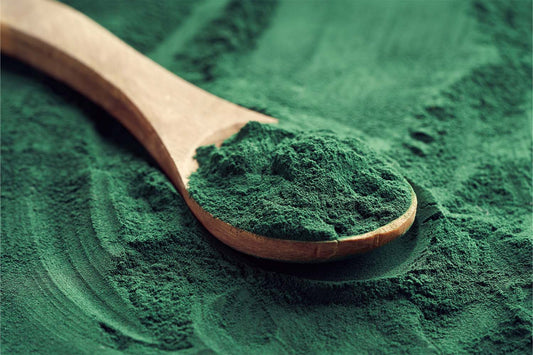Contrast bath therapy is a time-tested method for muscle recovery that’s been around since the ancient days of Greece and Rome. In the modern era where health and fitness are becoming an essential part of everyday life, contrast bath therapy is gaining attention.
In this article, we’ll explore the details and benefits of contrast bath therapy to help you decide if it’s the right muscle recovery option for you.
What Is Contrast Bath Therapy?
Contrast bath therapy, also known as contrast water therapy or contrast hydrotherapy, is a technique used in physical therapy and sports medicine that leverages the body's physiological responses to hot and cold stimuli. This therapeutic approach involves immersing the body or a specific body part alternately in hot and cold water immersion.
A typical therapy session usually starts with a hot bath, where the water temperature is typically between 100 to 110 degrees Fahrenheit. The hot water phase usually lasts for about three to four minutes and aims to cause vasodilation, a process where blood vessels widen or open up, increasing blood flow to the immersed area.
Following the hot bath, you then take a “cold plunge” into water typically set between 50 to 60 degrees Fahrenheit. Entering the ice bath activates the cold exposure phase, which lasts for about 1 minute, causing vasoconstriction, where blood vessels narrow or constrict, reducing blood flow.
This alternation between hot and cold temperatures — a cycle of dilation and constriction — is typically repeated several times during a session, usually ending on a cold cycle. The technique aims to stimulate circulation in the affected area and help to speed up recovery.
What Are the Benefits of Contrast Bath Therapy for Muscle Recovery?
Contrast bath therapy, an age-old practice that's been modernized for today's wellness-focused world, offers a range of benefits for muscle recovery:
Reduced Muscle Soreness
One of the most significant benefits of contrast bath therapy is the reduction of muscle soreness, particularly delayed onset muscle soreness (DOMS). DOMS is a common condition characterized by muscle discomfort and stiffness that typically sets in a day or two after intense exercise.
The alternating hot and cold temperatures in contrast bath therapy can help alleviate these symptoms. The heat phase aids in relaxing the muscles and increasing blood flow, while the cold phase helps reduce tension and discomfort.
Improved Blood Circulation
Contrast bath therapy works wonders for the circulatory system. The rapid changes in temperature cause your blood vessels and capillaries to dilate and constrict, creating a “pumping” effect that boosts blood circulation.
Improved circulation means more oxygen and nutrients are delivered to your muscles, promoting faster recovery after intense exercise. The increased blood flow is also essential for removing waste products, such as lactic acid, that accumulate during exercise.
Reduced Swelling
The cold phase of contrast bath therapy plays a crucial role in reducing swelling in the affected or injured area.
Remember that the cold temperatures cause vasoconstriction, reducing blood flow to the area and thereby limiting tension and swelling. This can be especially beneficial for individuals recovering from common sports injuries like ankle sprains, runner’s knee, or tennis elbow.
Increased Flexibility
The enhanced blood circulation and reduced muscle soreness resulting from contrast bath therapy can also lead to improved flexibility.
By alleviating muscle stiffness and promoting the health of your soft tissue, contrast bath therapy can help you maintain a full range of motion, which is essential for preventing injuries and improving athletic performance.
Accelerated Healing
Lastly, contrast bath therapy may accelerate the overall healing process. The therapy stimulates the immune system, triggering an immune response that includes the release of healing cells.
Combined with improved blood circulation, these cells can reach the injured areas faster, speeding up the recovery process.
How Does Contrast Bath Therapy Compare to Other Recovery Options?
Contrast bath therapy offers distinct advantages over other recovery options — while there are certainly benefits to these other modalities of recovery, none of them provide the same comprehensive benefits of contrast bath therapy.
For example, cryotherapy primarily uses cold temperatures to reduce swelling and promote healing. Saunas, on the other hand, utilize heat therapy to stimulate blood flow and relax muscles. Regular hydrotherapy can be beneficial for a variety of ailments, but it doesn't typically involve the rapid temperature changes that are central to contrast bath therapy.
By alternating between hot and cold water, contrast bath therapy combines the benefits of both heat and cold therapies — it gives you the best of both worlds.
Are There Any Risks or Precautions With Contrast Bath Therapy?
While contrast bath therapy is generally safe and beneficial for most people, there are some potential risks to be aware of.
For instance, individuals with high blood pressure should exercise caution due to the changes in blood circulation and heart rate prompted by the rapid temperature changes. The dilation and constriction of blood vessels could potentially cause fluctuations in blood pressure.
In addition, open wounds or skin infections should not be exposed to whirlpool baths or hot tubs, as this could potentially lead to further infection or complications. It's also important to note that extreme temperatures, both hot and cold, can be uncomfortable or even risky for some people, especially those with certain medical conditions or sensitivities.
As with any new therapy or exercise regimen, it's always best to consult with a physical therapist or other health professional before starting contrast bath therapy. They can provide personalized advice based on your health history and recovery needs, ensuring you reap the benefits of contrast bath therapy safely and effectively.
What Are Some Other Ways To Support Muscle Recovery?
While contrast bath therapy is a great tool for muscle recovery, it's just one piece of the puzzle. Here are several other strategies you can incorporate into your routine to further support muscle recovery:
Proper Nutrition
The food you eat plays a crucial role in muscle recovery.Consuming a balanced diet rich in protein, complex carbohydrates, and healthy fats can provide your body with the nutrients it needs to repair and build muscles. Post-workout, aim for a meal or snack that includes protein to support muscle repair and carbs to replenish energy stores.
Hydration
Staying well-hydrated is essential for optimal muscle function and recovery. Water supports every metabolic function in your body, including the process of rebuilding muscle after intense exercise. Make sure to drink plenty of fluids before, during, and after workouts.
Adequate Rest
Your body repairs and strengthens itself in the time between workouts, and continuous training can actually weaken even the strongest of athletes. Rest days are critical for muscle recovery, injury prevention, and performance improvement. Ensure that you're getting enough sleep, as this is when most muscle damage is repaired and growth is encouraged.
Gentle Exercise
Light activities, such as walking or cycling at a slow pace, can enhance blood flow to the muscles without causing further damage to them. These activities, known as active recovery, can help reduce muscle soreness and stiffness without potentially causing more soreness.
Stretching and Mobility Exercises
Regular stretching and mobility exercises can help maintain a full range of motion, which can prevent muscle imbalances and injuries. Yoga and pilates are excellent practices for improving flexibility and mobility.
Massage
A post-workout massage can help to relax tight muscles, increase blood flow, and speed up recovery time. You can book a session with a professional masseuse or use a foam roller for a self-massage.
Supplements
Certain nutritional supplements can support muscle recovery. For example, iwi life's algae-derived omega-3 Sport supplement provides DHA, which helps support proper muscle recovery. Our supplements can also provide extra support for your joints, heart, and overall mobility to keep you active and help you recover.
The Takeaway
Contrast bath therapy is a holistic recovery method that combines hot and cold water immersion. The numerous benefits of alternating between such extremes can jumpstart your efforts for faster muscle recovery. It’s not difficult to incorporate this ancient practice into your wellness routine at home, but it’s far from the only step you should take for your muscles.
To further support your muscles, consider adding iwi life’s plant-based omega-3 Sport supplement into your daily routine.
Sources
A Brief History of Spa Therapy | NCBI Bookshelf
Vasodilation: What Causes Blood Vessels to Widen | Cleveland Clinic
Vasoconstriction: What Is It, Symptoms, Causes & Treatment | Cleveland Clinic
What Is Lactic Acid? | Live Science
Hydrotherapy Contrast Shower | National University Of Health Sciences
Sleep Hygiene for Optimizing Recovery in Athletes: Review and Recommendations | PMC



















